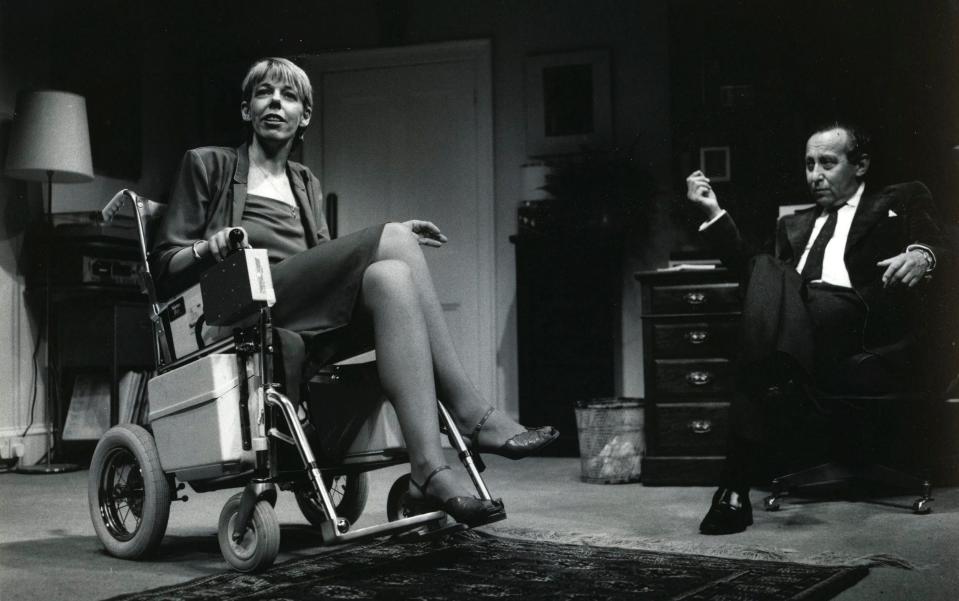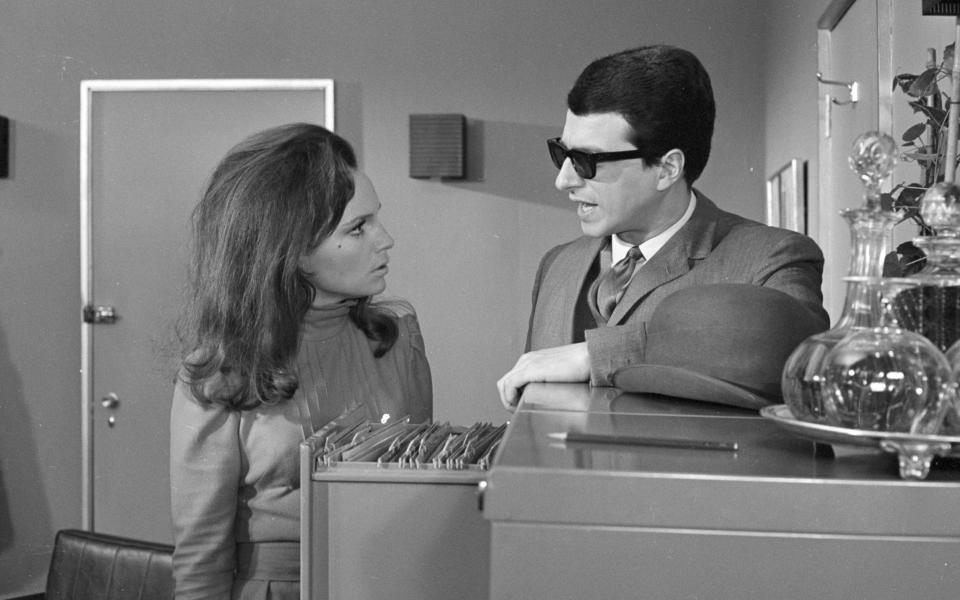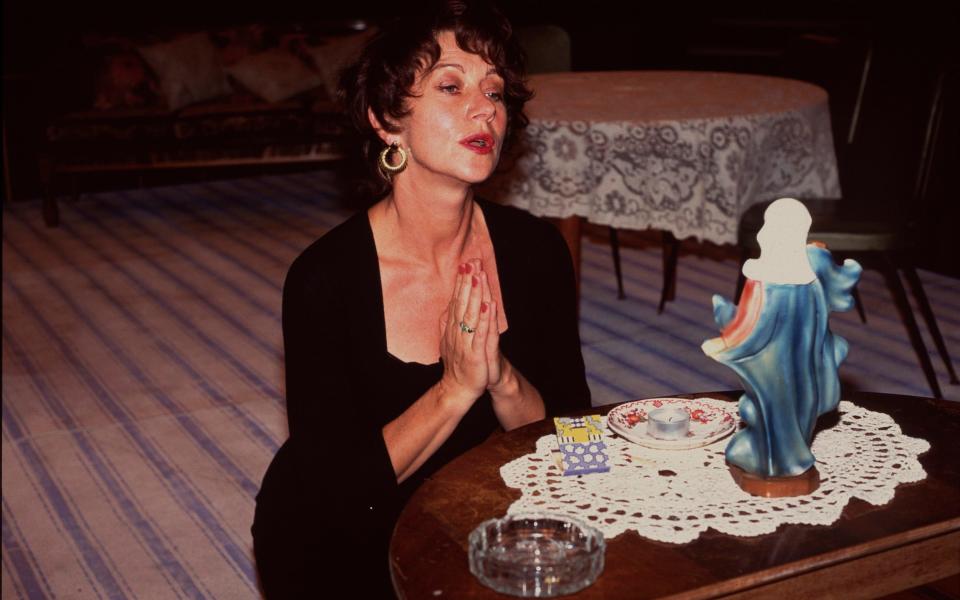Tom Kempinski, playwright best known for his two-hander Duet For One, about a wheelchair-bound violinist – obituary

Tom Kempinski, who has died aged 85, was a playwright whose reputation rests overwhelmingly on a single work. Duet for One, first performed in 1980, dramatises half a dozen gladiatorial encounters between a German-Jewish psychiatrist and a concert violinist, wheelchair-bound and suicidal, whose career has been halted by multiple sclerosis.
Raging against traumas unearthed from childhood and fresh antagonisms in her marriage, the silenced musician travels from denial to despair before concluding that her life without art has no meaning. Whether she carries out her threat to end it is left open to question.
The original production starred Kempinski’s then wife Frances de la Tour, whose incandescent performance helped to take the play from the minuscule Bush Theatre in west London to the West End, winning her the Olivier Award. The play was widely staged all over the world.
It was only later that Kempinski challenged an assumption that had been mapped on to the play from the beginning: that the character of Stephanie Abrahams was inspired by the story of Jacqueline du Pré, the cellist whose career was identically terminated by MS in the early 1970s.

“It doesn’t relate to Jacqueline du Pré at all,” the playwright told Dominic Maxwell in 2017. “It’s purely coincidental.” Instead, he said, it became apparent to him over time that Duet for One was an exploration of his own travails. “Rage, ideas of sexual perversion, ideas of torturing people, ideas that I had to suppress. Or paralyse. And that’s the woman, paralysed in the play.”
Of the many international productions in over 40 countries, the first on Broadway was a failure: “We f---ed up a wonderful play,” the producer told Kempinski. Kempinski was no fan of the 1986 film starring Julie Andrews, either. Directed by Andrei Konchalovsky, it populated the screen with characters who are only mentioned in the play. While the money was greatly welcomed, the playwright compared its soapy dramatics to an episode of Dallas.
Thomas Kempinski was born March 24 1938 in London to Gerhard and Melanie (née Rahmer) Kempinski, who ran a restaurant in their own name in the same building as the Veeraswamy off Regent Street. They had arrived in 1936, having been obliged as Jews to surrender the establishment they had owned in Berlin.
At the outbreak of war they sent their son to America, where his father’s parents were to look after him, only for his grandfather to die within six months and his grandmother to have him fostered. Meanwhile, members of his maternal family, having emigrated to the Netherlands, were murdered in the Holocaust. Then, two years after Kempinski was sent back to the UK, his own father, who was also an actor and found work in British films, died aged only 41.

Kempinski had a breakdown at the age of 10. After his mother sent him to board at Abingdon he went up to Gonville & Caius College in Cambridge to read modern languages, but he was unable to cope. He came down for good after 10 weeks and spent the same amount of time undergoing psychiatric treatment in the Maudsley Hospital in south London.
Choosing instead to train at Rada, he had a successful time acting in the 1960s. In theatre, he appeared in Blitz!, Lionel Bart’s less successful follow-up to Oliver!, and then joined Laurence Olivier’s newly formed National Theatre, taking a minor role in Othello and appearing in the now discredited film.
In television he guested in the likes of Z-Cars, Dixon of Dock Green and Crown Court. On the big screen he was in Doctor in Trouble and Gumshoe, an early film of Stephen Frears in which he played Albert Finney’s psychiatrist. For five years in this period he was married to Margaret Nolan, the actress whose most high-profile role was as a gold-painted Bond girl in Goldfinger.
In 1971 Sell-Out, the first of several musical collaborations with Roger Smith, was staged at the Old Vic. He continued acting while writing, sometimes adapting European works in translation, until the end of the decade. Most were confined to the fringe, and Duet for One seemed destined for obscurity, too: it was turned down by many theatres, which all gave him a version of the same note: “Who wants to see two people sitting down talking for two hours?”

His relationship with Frances de la Tour, with whom he was among the co-founders of the Workers Revolutionary Party, lasted for a decade and produced two children. After they separated in 1982 he started to suffer from agoraphobia and put on a great deal of weight, at one point ballooning to 25 stone. He also struggled with writer’s block until, far more overtly than he had with Duet for One, he made himself the subject of Separation.
Another two-hander, this transatlantic romance also featured an afflicted female performer – a young actress from New York – who cannot walk without crutches. The playwright described it as “autobiographical apart from the bit where they fall in love – everything else is completely true”. Starring David Suchet and Saskia Reeves, it transferred from Hampstead Theatre to the West End in 1987. In 2014 was revived at the Bolton Octagon where it ran in rep with the same cast also performing Duet for One.
Few of his many other plays found favour. One conspicuous failure was Sex Please, We’re Italian, a Neapolitan sex farce which Kempinski salvaged from a novel he had abandoned.
“It gave me a great deal of pleasure after years of introspective writing,” he said, but it did not give the critics pleasure when it opened at the Young Vic in 1991. “One of the most spectacularly unfunny evenings the London theatre has seen in decades,” wrote The New York Times. Its traumatised star, Helen Mirren, remembered the first night as “a slaughterhouse”.
The same year Kempinski married Sarah Tingay, a media lawyer, with whom he had a daughter. Both survive him along with a daughter and son from his marriage to Frances de la Tour.
Tom Kempinski, born March 24 1938, died August 2 2023

 Yahoo News
Yahoo News 
